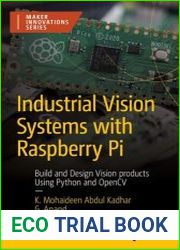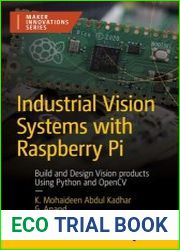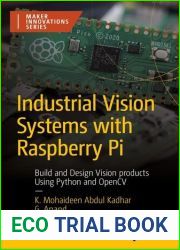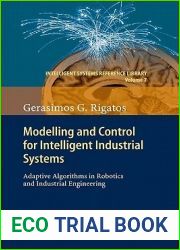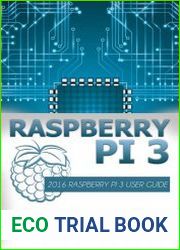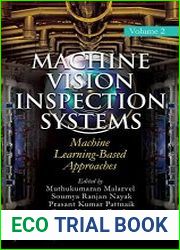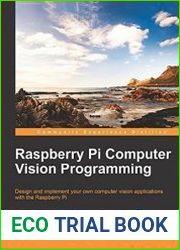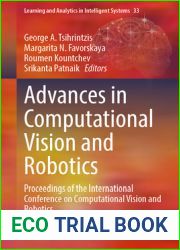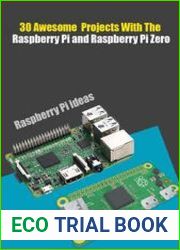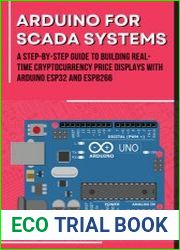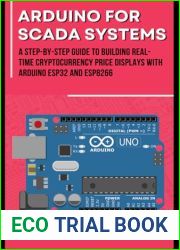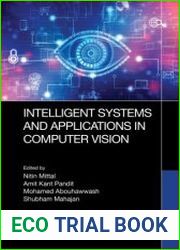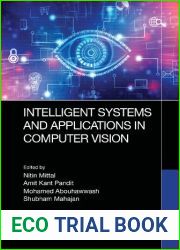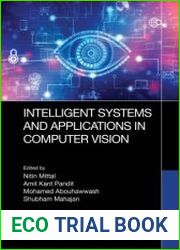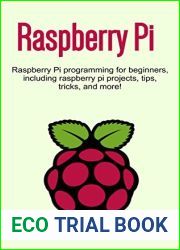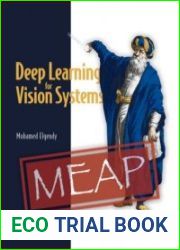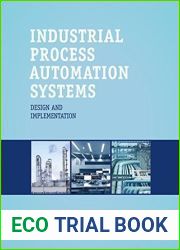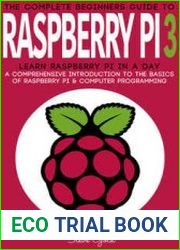
BOOKS - Industrial Vision Systems with Raspberry Pi Build and Design Vision products ...

Industrial Vision Systems with Raspberry Pi Build and Design Vision products Using Python and OpenCV
Author: K. Mohaideen Abdul Kadhar, G. Anand
Year: 2024
Pages: 346
Format: PDF
File size: 23.1 MB
Language: ENG

Year: 2024
Pages: 346
Format: PDF
File size: 23.1 MB
Language: ENG

Book Description: Industrial Vision Systems with Raspberry Pi Build and Design Vision Products Using Python and OpenCV In today's rapidly evolving technological landscape, industries are facing an unprecedented demand for vision systems due to their non-invasive nature in inspecting product quality. From identifying surface defects and verifying component orientation to measuring dimensions, these systems play a crucial role in ensuring the accuracy and reliability of modern manufacturing processes. This book is designed to guide readers through the process of developing their own industrial vision system using Raspberry Pi, one of the most popular single-board computers available. The book begins by introducing basic concepts and applications of machine vision systems, providing a solid foundation for understanding the technology behind these systems. Readers will then delve into the preliminaries of Python and OpenCV libraries, which are essential tools for implementing image processing in their projects. The installation of OpenCV for Python on Raspberry Pi is also covered, making it easy to get started with the development process. As the book progresses, interfacing techniques and common challenges faced by industrial vision systems, such as lighting and camera angles, are discussed in detail. Algorithms and image processing techniques, including Machine Learning and Deep Learning methods, are also explored, enabling readers to create sophisticated vision applications.
Industrial Vision Systems with Raspberry Pi Build and Design Vision Products Using Python и OpenCV В современном быстро развивающемся технологическом ландшафте отрасли сталкиваются с беспрецедентным спросом на системы зрения из-за их неинвазивного характера при проверке качества продукции. От выявления дефектов поверхности и проверки ориентации компонентов до измерения размеров, эти системы играют решающую роль в обеспечении точности и надежности современных производственных процессов. Эта книга призвана провести читателей через процесс разработки собственной промышленной системы зрения с помощью Raspberry Pi - одного из самых популярных доступных одноплатных компьютеров. Книга начинается с представления основных концепций и применений систем машинного зрения, обеспечивая прочную основу для понимания технологий, лежащих в основе этих систем. Затем читатели углубятся в прелиминары библиотек Python и OpenCV, которые являются необходимыми инструментами для реализации обработки изображений в своих проектах. Также рассматривается установка OpenCV для Python на Raspberry Pi, что позволяет легко начать процесс разработки. По мере развития книги подробно обсуждаются методы сопряжения и общие проблемы, с которыми сталкиваются промышленные системы зрения, такие как освещение и углы камеры. Также изучаются алгоритмы и методы обработки изображений, включая методы машинного обучения и глубокого обучения, что позволяет читателям создавать сложные приложения для работы со зрением.
Industrial Vision Systems with Raspberry Pi Build and Design Vision Products Using Python et OpenCV Dans le paysage technologique en évolution rapide d'aujourd'hui, les industries sont confrontées à une demande sans précédent pour les systèmes de vision en raison de leur caractère non invasif lors de la vérification de la qualité des produits. Depuis la détection des défauts de surface et la vérification de l'orientation des composants jusqu'à la mesure dimensionnelle, ces systèmes jouent un rôle crucial pour assurer la précision et la fiabilité des processus de fabrication modernes. Ce livre est conçu pour guider les lecteurs à travers le processus de développement de leur propre système de vision industrielle avec Raspberry Pi - l'un des ordinateurs les plus populaires disponibles. livre commence par une présentation des concepts de base et des applications des systèmes de vision industrielle, fournissant une base solide pour comprendre les technologies qui sous-tendent ces systèmes. s lecteurs vont ensuite approfondir les préliminaires des bibliothèques Python et OpenCV, qui sont les outils nécessaires pour mettre en œuvre le traitement d'image dans leurs projets. L'installation d'OpenCV pour Python sur Raspberry Pi est également envisagée, ce qui facilite le démarrage du processus de développement. Au fur et à mesure que le livre progresse, les techniques d'appariement et les problèmes communs rencontrés par les systèmes de vision industrielle, tels que l'éclairage et les angles de caméra, sont discutés en détail. s algorithmes et les méthodes de traitement d'images, y compris les techniques d'apprentissage automatique et d'apprentissage profond, sont également étudiés, ce qui permet aux lecteurs de créer des applications complexes pour la vision.
stemas de visión industrial con Raspberry Pi Build and Design Vision Products Using Python y OpenCV En el actual panorama tecnológico en rápida evolución, la industria enfrenta una demanda sin precedentes de sistemas de visión desde debido a su carácter no invasivo en la inspección de la calidad del producto. Desde la detección de defectos superficiales y la comprobación de la orientación de los componentes hasta la medición dimensional, estos sistemas desempeñan un papel crucial para garantizar la precisión y fiabilidad de los procesos de fabricación modernos. Este libro pretende guiar a los lectores a través del proceso de desarrollo de su propio sistema de visión industrial con Raspberry Pi, uno de los ordenadores de pago único más populares disponibles. libro comienza presentando los conceptos básicos y las aplicaciones de los sistemas de visión automática, proporcionando una base sólida para entender las tecnologías que subyacen a estos sistemas. A continuación, los lectores profundizarán en los preliminares de las bibliotecas Python y OpenCV, que son las herramientas necesarias para implementar el procesamiento de imágenes en sus proyectos. También se está considerando la instalación de OpenCV para Python en Raspberry Pi, lo que facilita el inicio del proceso de desarrollo. A medida que avanza el libro, se discuten en detalle las técnicas de emparejamiento y los problemas comunes que enfrentan los sistemas de visión industrial, como la iluminación y los ángulos de la cámara. También se estudian algoritmos y técnicas de procesamiento de imágenes, incluyendo técnicas de aprendizaje automático y aprendizaje profundo, lo que permite a los lectores crear aplicaciones complejas para trabajar con la visión.
Industrial Vision Systems with Raspberry Pi Build and Design Vision Products Using Python e OpenCV Nel panorama tecnologico in continua evoluzione, le industrie si trovano ad affrontare una domanda senza precedenti di sistemi visivi a causa della loro natura non invasiva nel controllo della qualità dei prodotti. Dall'identificazione dei difetti di superficie alla verifica dell'orientamento dei componenti fino alla misurazione delle quote, questi sistemi sono fondamentali per garantire l'accuratezza e l'affidabilità dei processi di produzione moderni. Questo libro è progettato per condurre i lettori attraverso il processo di sviluppo del proprio sistema di visione industriale con Raspberry Pi, uno dei computer monouso più popolari disponibili. Il libro inizia presentando i concetti e le applicazioni fondamentali dei sistemi di visione automatica, fornendo una base solida per comprendere le tecnologie alla base di questi sistemi. I lettori approfondiranno le librerie Python e Python, che sono gli strumenti necessari per l'elaborazione delle immagini nei loro progetti. Viene inoltre valutata l'installazione di un OpenCV per Python su Raspberry Pi, che consente di avviare facilmente il processo di sviluppo. Man mano che il libro si sviluppa, si discutono in dettaglio i metodi di blend e i problemi comuni che i sistemi di visione industriali affrontano, come l'illuminazione e gli angoli della camera. Vengono inoltre studiati algoritmi e metodi di elaborazione delle immagini, inclusi metodi di apprendimento automatico e apprendimento approfondito, che consentono ai lettori di creare applicazioni complesse per la visione.
Industrial Vision Systems mit Raspberry Pi Build und Design Vision Produkte mit Python und OpenCV In der heutigen schnelllebigen Technologielandschaft sind die Branchen aufgrund ihres nicht-invasiven Charakters bei der Überprüfung der Produktqualität mit einer beispiellosen Nachfrage nach Vision-Systemen konfrontiert. Von der Erkennung von Oberflächenfehlern über die Überprüfung der Bauteilorientierung bis hin zur Dimensionierung spielen diese Systeme eine entscheidende Rolle, um die Genauigkeit und Zuverlässigkeit moderner Fertigungsprozesse zu gewährleisten. Dieses Buch soll die ser durch den Prozess der Entwicklung ihres eigenen industriellen Sehsystems mit dem Raspberry Pi führen - einem der beliebtesten verfügbaren ngle-Board-Computer. Das Buch beginnt mit einer Einführung in die grundlegenden Konzepte und Anwendungen von Bildverarbeitungssystemen und bietet eine solide Grundlage für das Verständnis der Technologien, die diesen Systemen zugrunde liegen. Die ser werden dann tiefer in die Präliminare der Python- und OpenCV-Bibliotheken eintauchen, die die notwendigen Werkzeuge sind, um die Bildverarbeitung in ihren Projekten zu implementieren. Es wird auch erwogen, OpenCV für Python auf dem Raspberry Pi zu installieren, wodurch der Entwicklungsprozess einfach gestartet werden kann. Im Laufe der Entwicklung des Buches werden Schnittstellentechniken und allgemeine Probleme, mit denen industrielle Sehsysteme konfrontiert sind, wie Beleuchtung und Kamerawinkel, ausführlich diskutiert. Algorithmen und Bildverarbeitungsmethoden werden ebenfalls untersucht, einschließlich maschineller rn- und Deep-arning-Techniken, die es den sern ermöglichen, komplexe Sehanwendungen zu erstellen.
Industrial Vision Systems with Raspberry Pi Build and Design Vision Products Używając Pythona i OpenCV W dzisiejszym szybko rozwijającym się krajobrazie technologicznym, branże stoją w obliczu bezprecedensowego zapotrzebowania na systemy wzroku ze względu na nieinwazyjny charakter w kontroli jakości produktów. Systemy te odgrywają kluczową rolę w zapewnieniu dokładności i niezawodności nowoczesnych procesów produkcyjnych, począwszy od wykrywania wad powierzchni i weryfikacji orientacji elementów po wymiary pomiarowe. Ta książka ma na celu poprowadzenie czytelników poprzez proces opracowywania własnego przemysłowego systemu wizji przy użyciu Raspberry Pi - jednego z najpopularniejszych dostępnych komputerów z pojedynczą płytą. Książka rozpoczyna się od wprowadzenia podstawowych koncepcji i zastosowań systemów maszynowego widzenia, stanowiąc solidny fundament dla zrozumienia technologii leżących u podstaw tych systemów. Czytelnicy będą następnie zagłębiać się w wstępne biblioteki Pythona i OpenCV, które są niezbędnymi narzędziami do wdrażania przetwarzania obrazu w swoich projektach. Przyglądamy się również instalacji OpenCV dla Pythona na malinowym Pi, co ułatwia rozpoczęcie procesu rozwoju. Wraz z postępem książki szczegółowo omawiane są techniki parowania i wspólne problemy, z jakimi borykają się przemysłowe systemy widzenia, takie jak oświetlenie i kąty kamer. Badane są również algorytmy i techniki przetwarzania obrazu, w tym uczenie maszynowe i techniki głębokiego uczenia się, co pozwala czytelnikom budować zaawansowane aplikacje wizualne.
''
Python ve OpenCV Kullanarak Raspberry Pi Yapı ve Tasarım Vizyon Ürünleri ile Endüstriyel Vizyon stemleri Günümüzün hızla gelişen teknoloji ortamında, endüstriler, ürün kalite kontrollerinde invaziv olmayan doğaları nedeniyle vizyon sistemleri için benzeri görülmemiş bir taleple karşı karşıyadır. Yüzey kusurlarını tespit etmek ve bileşen yönünü ölçmeye kadar, bu sistemler modern üretim süreçlerinin doğruluğunu ve güvenilirliğini sağlamada kritik bir rol oynamaktadır. Bu kitap, okuyuculara mevcut en popüler tek kartlı bilgisayarlardan biri olan Raspberry Pi'yi kullanarak kendi endüstriyel vizyon sistemlerini geliştirme sürecinde rehberlik etmeyi amaçlamaktadır. Kitap, makine görüş sistemlerinin temel kavramlarını ve uygulamalarını tanıtarak başlar ve bu sistemlerin altında yatan teknolojileri anlamak için sağlam bir temel sağlar. Okuyucular daha sonra projelerinde görüntü işleme uygulamak için gerekli araçlar olan Python ve OpenCV kütüphanesi ön hazırlıklarını inceleyeceklerdir. Ayrıca, Python için OpenCV'yi bir Raspberry Pi'ye yüklemeye bakıyoruz, bu da geliştirme sürecine başlamayı kolaylaştırıyor. Kitap ilerledikçe eşleştirme teknikleri ve aydınlatma ve kamera açıları gibi endüstriyel görüş sistemlerinin karşılaştığı ortak sorunlar ayrıntılı olarak ele alınmaktadır. Makine öğrenimi ve derin öğrenme teknikleri de dahil olmak üzere görüntü işleme algoritmaları ve teknikleri de incelenmekte ve okuyucuların sofistike vizyon uygulamaları oluşturmasına olanak sağlamaktadır.
أنظمة الرؤية الصناعية مع منتجات بناء وتصميم التوت ومنتجات الرؤية باستخدام Python و OpenCV في المشهد التكنولوجي سريع التطور اليوم، تواجه الصناعات طلبًا غير مسبوق على أنظمة الرؤية نظرًا لطبيعتها غير الغازية في فحوصات جودة المنتج. من الكشف عن العيوب السطحية والتحقق من اتجاه المكونات إلى قياس الأبعاد، تلعب هذه الأنظمة دورًا حاسمًا في ضمان دقة وموثوقية عمليات التصنيع الحديثة. يهدف هذا الكتاب إلى توجيه القراء خلال عملية تطوير نظام الرؤية الصناعية الخاص بهم باستخدام Raspberry Pi - أحد أشهر أجهزة الكمبيوتر الفردية المتاحة. يبدأ الكتاب بتقديم المفاهيم والتطبيقات الأساسية لأنظمة الرؤية الآلية، مما يوفر أساسًا صلبًا لفهم التقنيات التي تقوم عليها هذه الأنظمة. سيتعمق القراء بعد ذلك في العروض الأولية لمكتبة Python و OpenCV، والتي تعد أدوات أساسية لتنفيذ معالجة الصور في مشاريعهم. ننظر أيضًا في تثبيت OpenCV لـ Python على Raspberry Pi، مما يجعل من السهل بدء عملية التطوير. مع تقدم الكتاب، تتم مناقشة تقنيات الاقتران والمشاكل الشائعة التي تواجهها أنظمة الرؤية الصناعية مثل الإضاءة وزوايا الكاميرا بالتفصيل. كما تتم دراسة خوارزميات وتقنيات معالجة الصور، بما في ذلك التعلم الآلي وتقنيات التعلم العميق، مما يسمح للقراء ببناء تطبيقات رؤية متطورة.
工業視覺系統與Raspberry Pi Build and Design Vision Products Using Python和OpenCV在當今快速發展的技術格局中,由於其非侵入性在產品質量檢查中面臨前所未有的視覺系統需求。從檢測表面缺陷和檢查組件方向到測量尺寸,這些系統在確保現代制造過程的準確性和可靠性方面起著至關重要的作用。這本書旨在指導讀者使用Raspberry Pi(最受歡迎的單板計算機之一)開發自己的工業視覺系統的過程。本書首先介紹了機器視覺系統的基本概念和應用,為了解這些系統背後的技術提供了堅實的基礎。然後,讀者將深入研究Python和OpenCV庫的前奏曲,它們是在其項目中實現圖像處理的必要工具。還考慮在Raspberry Pi上安裝Python的OpenCV,從而可以輕松地開始開發過程。隨著本書的進展,詳細討論了配對技術以及工業視覺系統面臨的常見問題,例如照明和相機角度。還研究了圖像處理算法和技術,包括機器學習和深度學習技術,使讀者可以創建復雜的視覺應用。







